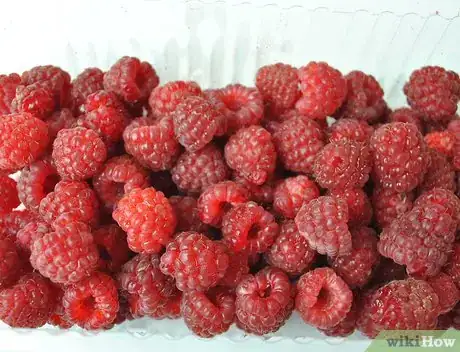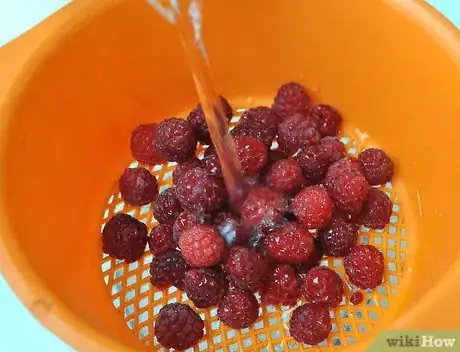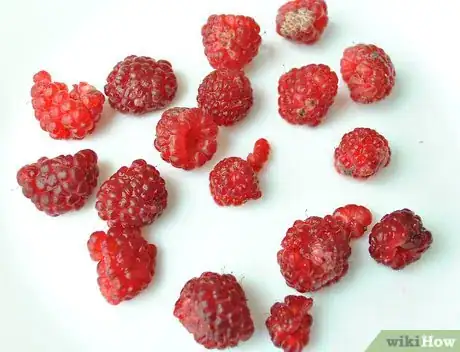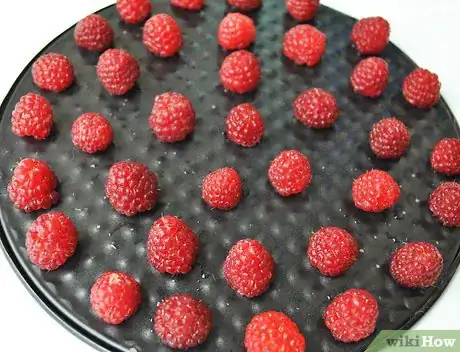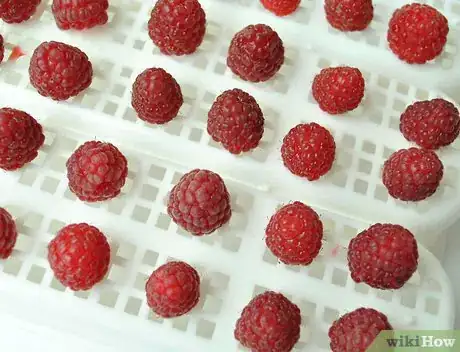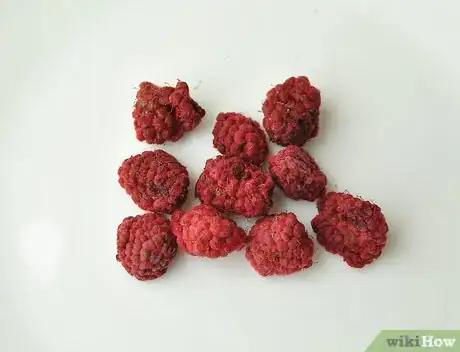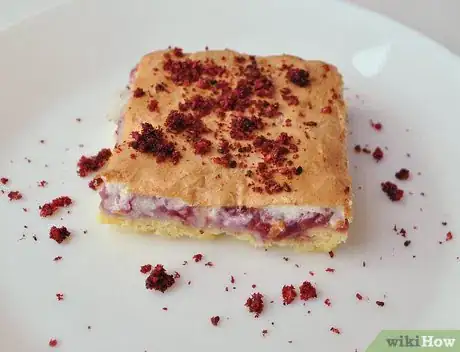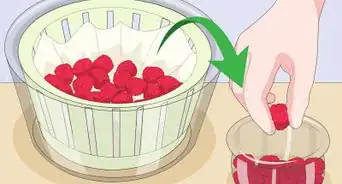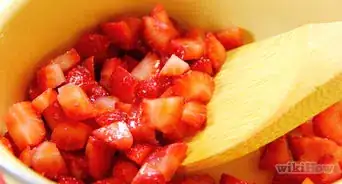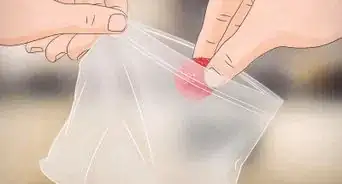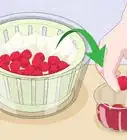This article was co-authored by wikiHow staff writer, Jessica Gibson. Jessica Gibson is a Writer and Editor who's been with wikiHow since 2014. After completing a year of art studies at the Emily Carr University in Vancouver, she graduated from Columbia College with a BA in History. Jessica also completed an MA in History from The University of Oregon in 2013.
This article has been viewed 34,675 times.
Learn more...
Fresh raspberries are remarkable when they're at their peak. If you'd like to capture the flavor of ripe raspberries, dehydrate them. Dehydrated raspberries can be stored for up to one year and they're simple to make. Just wash and dry your raspberries, place them on your dehydrator trays, and dehydrate them until the moisture is removed. Your dehydrated raspberries will be crisp, light, and full of flavor!
Steps
Preparing the Raspberries
-
1Select the raspberries. Try to use the ripest, freshest raspberries you can find. This usually means you'll be getting them at the peak of their season, when they're also the least expensive. Buy as many raspberries as you'd like to dehydrate.[1]
- You may be able to find deals on bulk raspberries from farmer's markets or orchards.
-
2Wash the raspberries. Place your ripe raspberries into a strainer or colander. Run water over the berries to wash away any dirt or debris. You can also pick out any twigs or leaves you find and discard them.Advertisement
-
3Sort through the raspberries. Go through the washed raspberries and remove any berries that are smashed or so soft that they begin to fall apart in your hands. Set these aside for a different use. You'll want to use raspberries that are whole, don't have any blemishes, and are still a little firm.[2]
- You can freeze the berries that are slightly smashed and blend them into a smoothie.
-
4Dry the raspberries. Once you've selected the best raspberries for dehydrating, scatter them on a baking sheet and let them air dry. This will take several hours since the berries should be completely dry.[3]
Dehydrating the Raspberries in a Dehydrator
-
1Arrange the raspberries on the trays. Place the raspberries in a single layer on the trays that came with your dehydrator. Ensure that there's a little space between the berries, so air can circulate easily. If you want the berries to keep their shape, set them upright.[4]
- If you can, use mesh trays. These can contain the raspberries better and keep them from rolling off as you place them in the dehydrator.
-
2Turn the dehydrator on. Put the trays of berries in your dehydrator and close it. Turn the dehydrator on to 135 degrees F (60 C). Let the berries dehydrate for 12 to 18 hours. The time it takes depends on the size of the berries, moisture level of the berries, and your dehydrator.[5]
- If your dehydrator has a fruit setting, you can simply turn it on.
-
3Consider using an oven. If you don't have a dehydrator, you can just place the raspberries on rimmed baking sheets. Put the raspberries into an oven at 140 degrees F (60 C). Bake the raspberries for 6 to 9 hours or until they completely dry out. You'll need to stir the berries every 2 hours, so they dry evenly.
- The oven is convenient if you don't have a dehydrator, but it won't dehydrate the raspberries as evenly as a dehydrator.
Storing the Dehydrated Raspberries
-
1Check the dehydrated raspberries. Once the berries have dehydrated, they'll become light and completely dry. Don't worry if they lighten in color - they're still safe to eat. If the berries seem chewy, put them back in the dehydrator. Only store them once they're crisp.
-
2Transfer the raspberries to airtight containers. For quick storage, scoop the dehydrated raspberries into airtight containers (like mason jars or airtight plastic containers). To keep moisture out of the containers, add an oxygen absorber packet.[6]
- Store the containers in a dry place away from light. This will prevent the light from fading the raspberries further.
-
3Use the dehydrated raspberries. You can eat the dehydrated raspberries on their own for a quick snack, or use them in recipes calling for raspberries. Just add a few tablespoons of water or liquid to the dehydrated raspberries to rehydrate them.
- You can also grind the dehydrated raspberries into a powder. Sprinkle the powder on baked goods, oatmeal, or use it to decorate desserts.
Things You'll Need
- Dehydrator
- Strainer or colander
- Baking sheet
- Airtight containers
- Oxygen absorber packets
